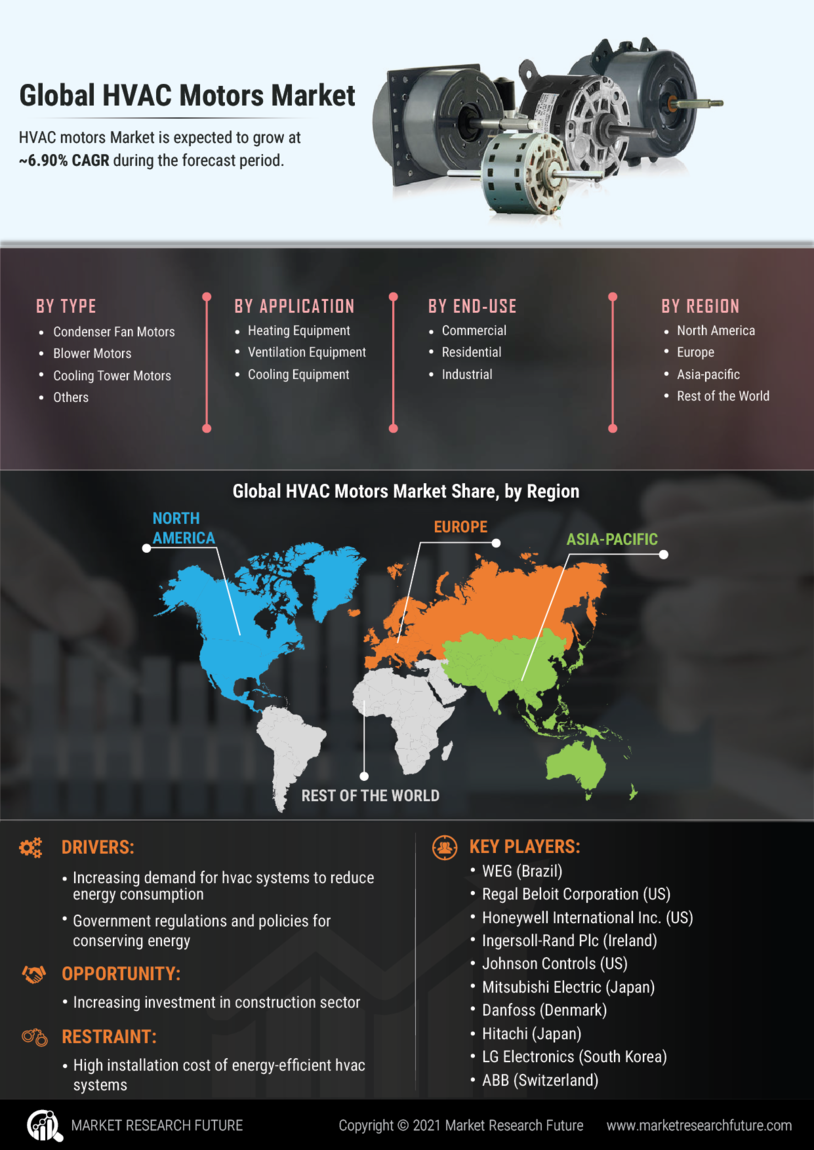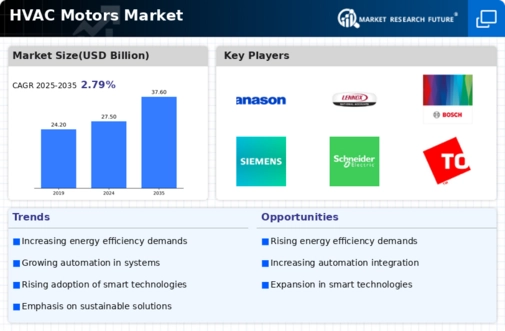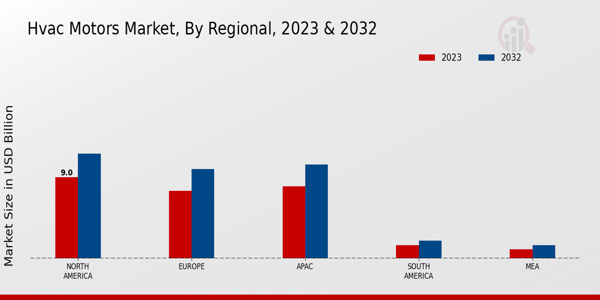Market Growth Projections
The Global HVAC Motors Market Industry is poised for substantial growth, with projections indicating a market size of 27.5 USD Billion in 2024 and an anticipated increase to 37.6 USD Billion by 2035. This growth trajectory suggests a robust demand for HVAC motors driven by various factors, including energy efficiency, technological advancements, and regulatory support. The expected CAGR of 2.88% from 2025 to 2035 further emphasizes the market's potential for expansion. As stakeholders adapt to evolving consumer preferences and regulatory landscapes, the HVAC motors sector is likely to witness significant developments in the years ahead.
Growing Demand for Energy Efficiency
The Global HVAC Motors Market Industry experiences a notable surge in demand for energy-efficient solutions. As energy costs continue to rise, consumers and businesses alike are increasingly seeking HVAC systems that minimize energy consumption while maximizing performance. This trend is further supported by government regulations promoting energy efficiency standards. In 2024, the market is projected to reach 27.5 USD Billion, reflecting a growing awareness of sustainability and operational cost savings. Manufacturers are responding by innovating motor technologies that enhance efficiency, which could lead to a more competitive market landscape.
Technological Advancements in Motor Design
Technological advancements play a pivotal role in shaping the Global HVAC Motors Market Industry. Innovations such as brushless DC motors and variable speed drives are becoming more prevalent, offering improved performance and reliability. These advancements not only enhance energy efficiency but also reduce maintenance costs, appealing to both residential and commercial sectors. As the market evolves, the integration of smart technologies into HVAC systems is likely to drive further growth. The anticipated CAGR of 2.88% from 2025 to 2035 suggests that these technological improvements will significantly influence market dynamics in the coming years.
Regulatory Support for Environmental Standards
Regulatory frameworks aimed at enhancing environmental standards are significantly influencing the Global HVAC Motors Market Industry. Governments worldwide are implementing stringent regulations to reduce greenhouse gas emissions and promote sustainable practices. These regulations often require the adoption of energy-efficient HVAC systems, which in turn drives demand for high-performance motors. As a result, manufacturers are compelled to innovate and comply with these standards, fostering a competitive environment. The ongoing regulatory support is likely to sustain market growth, as stakeholders increasingly prioritize environmentally friendly solutions in their HVAC systems.
Rising Consumer Awareness of Indoor Air Quality
The growing awareness of indoor air quality (IAQ) is emerging as a crucial driver for the Global HVAC Motors Market Industry. Consumers are becoming more conscious of the health implications associated with poor air quality, prompting them to invest in HVAC systems that incorporate advanced filtration and ventilation technologies. This trend is particularly pronounced in residential settings, where individuals seek to create healthier living environments. As a result, HVAC motors that facilitate improved air circulation and filtration are gaining traction. This shift in consumer preferences is expected to contribute to the overall growth of the market in the coming years.
Increasing Urbanization and Infrastructure Development
Urbanization and infrastructure development are key drivers of the Global HVAC Motors Market Industry. As populations migrate to urban areas, the demand for efficient heating, ventilation, and air conditioning systems escalates. This trend is particularly evident in emerging economies where rapid urban growth necessitates the construction of new residential and commercial buildings. Consequently, HVAC systems equipped with advanced motors are increasingly being installed to meet the rising demand for climate control. The market is expected to grow to 37.6 USD Billion by 2035, underscoring the impact of urbanization on HVAC motor adoption.





















